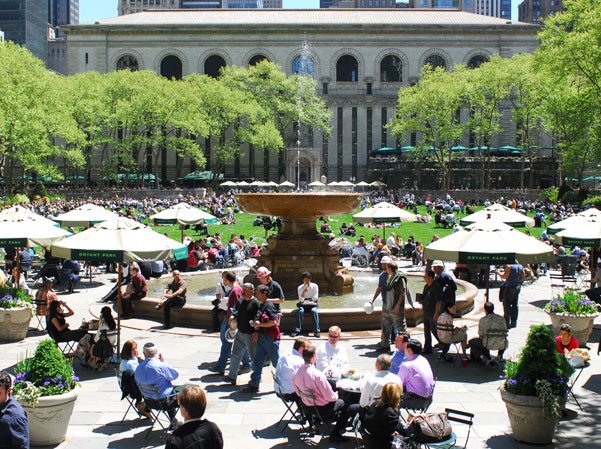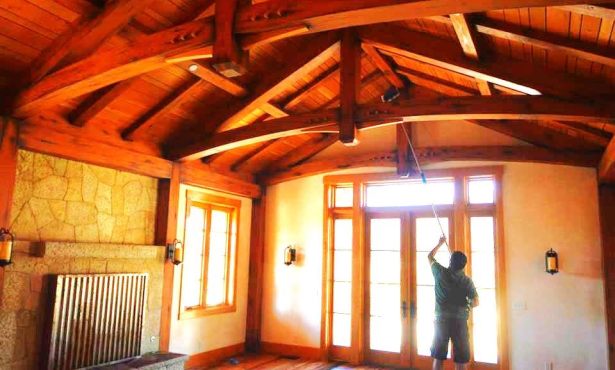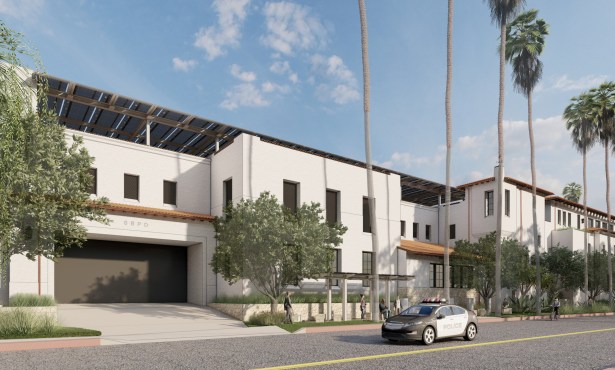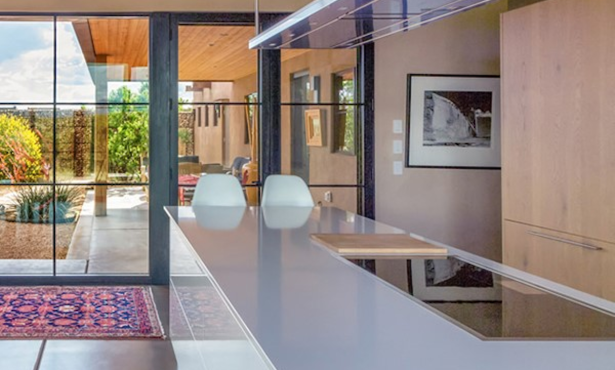Creative Spark for State Street
Using Local Talent to Keep State Street Special

Our experiences of great cities in the world are defined by many things. Local art, culture, music, and cuisine all leave distinct impressions about a sense-of-place. Sometimes place embodies the natural beauty of a setting, and often it is defined by the manmade environments we create. Santa Barbara certainly enjoys equal measures of both. Many urban places evolve over time, tapestries woven together by careful planning as well as an evolution of a rich language of architecture and landscape design. We revel in a stroll through Venice, arriving at St. Mark’s to be entertained by the flight of pigeons; or gaze at the skaters at Rockefeller Center gliding across the ice; or celebrate the wedding party on our courthouse lawn.
It is without a doubt that conscious planning and design efforts formed these creations and imbued them with a special sense-of-place. Architects, artists, urban planners, landscape architects, and a host of talented collaborators have shaped our physical reality, sculpting space using form and scale, texture and pattern, and innovation and context to solve problems, but most importantly, to create delight. These dreamers have woven the fabric that cloaks us with the memories of spaces and places that define our cultural conscience. As we focus on State Street and begin to imagine its future, solutions will need to address the forces reshaping our businesses, lifestyles, and the environment. In the not-so-distant past, shopping malls replaced mom-and-pop retailers on Main Streets across America and created economic blights in small towns. Santa Barbara responded with Paseo Nuevo, intertwined with Main Street and supported by an ample amount of well-integrated parking structures to help ensure downtown activity. It was a timely and intelligent plan that worked well … until now.
Once again, significant changes in our culture are compelling us to adapt. America has transitioned from a largely manufacturing to a service-based economy. Powerful technologies have increased productivity while requiring fewer people in the workforce. The pandemic has amplified how the internet has forever changed the ways we work, play, shop, and manufacture. These pressures have focused a spotlight on the stress fractures that are certainly apparent in our downtown. Commercial vacancy robs our downtown of its vitality. Housing is an urgent priority, but the shoebox-shaped properties that line State Street (which no longer address the operating needs of retailers) make mixed-use development on these undersized lots very challenging. Adaptive reuse of the failed department stores poses costly structural and infrastructure challenges that will require exploring imaginative design solutions that can be economically feasible. The conversion of State Street into an open-air mall will also need the best of our talents to make a public realm that embraces our special historical identity while striving to be relevant in the 21st century and for future generations of Santa Barbara residents and visitors.
I believe the time for bold imagination is urgently needed, but I would caution that there is no simple solution that can cure what is now a tectonic shift in our society. Community leaders, business owners and homeowners, developers, and the real estate community will all have important parts to play in shaping and implementing a plan that will result in meaningful interventions to revitalize State Street. I am confident, however, that the most successful ideas will be borne from the collaborative efforts that will spring forth from our own design community. There are a number of vehicles to energize that think-tank: sponsored competitions, either open or by invitation; targeted design studies addressing specific issues; assembling a design advisory committee; and holding forums organized by the local chapter of the AIA to explore ideas. There is much to be learned from a robust, multilayered approach to identifying and addressing the possibilities that lie ahead. With that in mind, I urge our government officials to harvest the wealth of talent, knowledge, and commitment that our design community has consistently exhibited. Remember, it is the dreamers who will add the creative spark that is essential to ensure that State Street maintains a very special sense-of-place.
Bob Kupiec, AIA, a Principal at Kupiec Architects PC, is a member of the Santa Barbara Chapter of the American Institute of Architects and currently serves on the Planning Commission for Montecito. He is the recipient of a National AIA Honor Award for Urban Design for the Restoration of Bryant Park and has recently completed an extensive renovation of the Santa Barbara Museum of Art. Architecturally Speaking is written by members of the American Institute of Architects’ Santa Barbara chapter. For more info about AIASB, visit aiasb.com.
Support the Santa Barbara Independent through a long-term or a single contribution.




You must be logged in to post a comment.